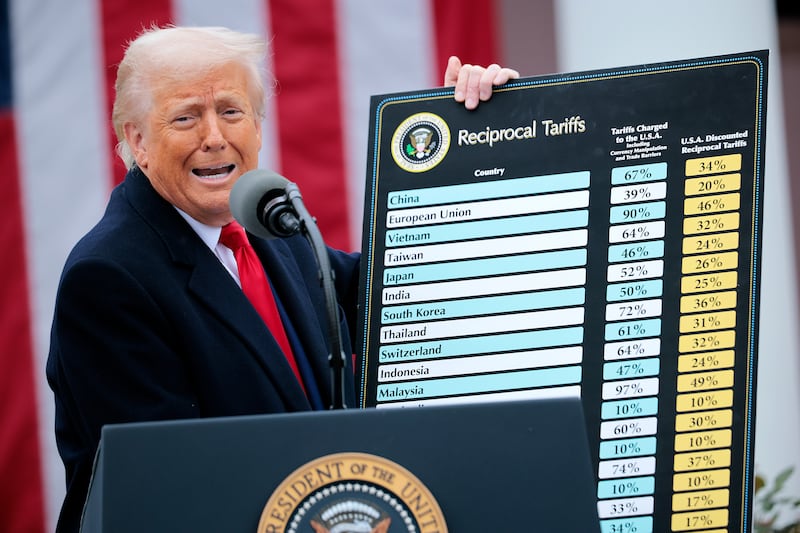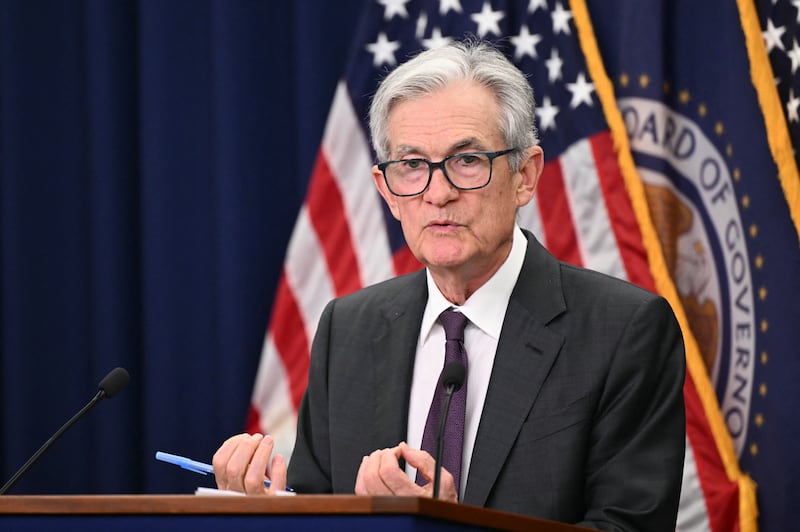President Donald Trump marked the highly anticipated start of his massive tariffs with a classic all-caps social media rant against the rest of the world.
After several delays, products from nearly 70 countries were hit with tariffs of 10 to 41 percent starting Thursday, risking price increases for everyday goods ranging from food and clothing to toys and electronics, ABC News reported.
“RECIPROCAL TARIFFS TAKE EFFECT AT MIDNIGHT TONIGHT! BILLIONS OF DOLLARS, LARGELY FROM COUNTRIES THAT HAVE TAKEN ADVANTAGE OF THE UNITED STATES FOR MANY YEARS, LAUGHING ALL THE WAY, WILL START FLOWING INTO THE USA,” Trump wrote on a Truth Social post.
This is not at all how tariffs work. The duties are an import tax paid by American companies—not foreign countries—with the costs typically passed on to consumers. The tariffs will cost the average American household an additional $2,400 this year, the Yale Budget Lab found this week.

That didn’t stop the president from celebrating with a follow-up post saying, “IT’S MIDNIGHT!!! BILLIONS OF DOLLARS IN TARIFFS ARE NOW FLOWING INTO THE UNITED STATES OF AMERICA!”
The tariffs that took effect Thursday were similar to the devastating “reciprocal” tariffs—which aren’t really reciprocal because they’re not based on other countries’ import duties—that were originally unveiled on the president’s “Liberation Day” on April 2.
Products from Canada, a top U.S. trade partner, will be taxed at 35 percent, while goods from Brazil—which the U.S. relies on heavily for coffee—are now facing a 40 percent duty. Products from India were hit with a 25 percent tariff that is expected to climb to 50 percent later this month.
Those are on top of a pre-existing 10 percent universal tariff and huge sector-specific tariffs of 50 percent on imported aluminum, copper and steel.
Trump had originally delayed the most severe “reciprocal” tariffs and vowed to strike 90 deals in 90 days.
In early July, he set a new deadline of August 1, and then finally August 7. Of the promised trade deals, the White House has announced agreements with just the U.K., Vietnam, and Indonesia, and a preliminary accord with China.

Last week, the Trump administration said the tariffs were part of a “new system of trade” that aims to prioritize “fair and balanced trade” over efficiency at all costs, according to ABC News.
Administration officials have alternated between warning American companies that they’d better eat the costs of the tariffs, telling American consumers they need to tighten their belts for a while, and assuring voters they will find savings in other areas—even when the math doesn’t add up.
For example, in the long run, The Budget Lab predicted that U.S. manufacturing could expand by 2.1 percent as a result of the tariffs. But those gains are projected to be “more than crowded out” by losses in other sectors, such as construction and agriculture.
The original “Liberation Day” tariffs have been challenged in court but remain in effect while the legal proceedings continue. Some Republicans are secretly hoping the president loses in court because the tariffs are deeply unpopular among the public.
“THE ONLY THING THAT CAN STOP AMERICA’S GREATNESS WOULD BE A RADICAL LEFT COURT THAT WANTS TO SEE OUR COUNTRY FAIL!” Trump wrote in his Truth Social post.






